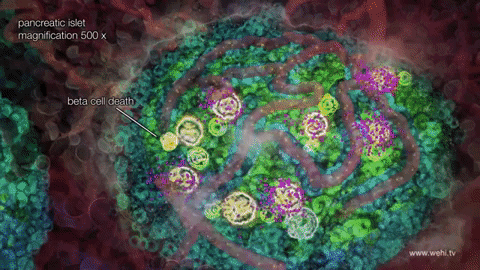This star has been going nova every year, for millions of years. A nova star is like a vampire that siphons gas from its binary partner. As it does so, the gas is compressed and heated, and eventually, it explodes. The remnant gas shell from that explosion expands outward and is lit up by the stars at the centre of it all. Most of these novae explode about once every 10 years.
But now astrophysicists have discovered one remnant so large that the star that created it must have been erupting yearly for millions of years. The team of astrophysicist published their findings in a letter in the journal Nature.
The star in question is in the Andromeda galaxy, and it’s called M31N 2008-12a. When it erupts as a nova, it brightens by a million times and the ejected material travels outward at thousands of miles per second. The team behind the study thinks that M32N 2008-12a goes nova every year, and the result is what they’re calling a “super remnant” that measures almost 400 light-years across.
The team of astrophysicists, which includes members from San Diego State University and from the Liverpool John Moores University in England, used observations from the Hubble Space Telescope and ground-based telescopes. They studied the chemical composition of the expanding remnant to confirm its association with the star at the centre, M31N 2008-12a.
The interesting thing about this distant nova is its possible connection to something larger in the Universe, something that astronomers inherently rely on to understand the Universe: Type 1a Supernovae.
Most people are familiar with supernovae overall. A star several times more massive than our Sun eventually burns enough of the hydrogen in its core that the outward pressure from its own fusion can’t sustain itself against the inward force of its own gravity. The whole star collapses in on itself and then explodes outward in one of nature’s most powerful and most luminous phenomenon.
But that’s just one type of supernova. There are other types, including the Type 1a. A type 1a supernovae start with two normal stars in a binary pair. As the pair ages together, one-star inevitably becomes more massive than the other. The large one will start to siphon off-gas from the other, expanding and engulfing the smaller star in its envelope.
Eventually, the two stars spiral together in their common envelope of gas, and as time goes on, the common envelope of gas is ejected away from the binary pair. Then things get interesting again.
The core of the larger star collapses and becomes a white dwarf. The other star is ageing, too, and eventually, it can’t hold onto its outer layers of gas. The white dwarf begins to siphon off the gas, and once it gains enough mass, it breaches what’s known as its Chandrasekhar limit, which is the maximum mass limit for a white dwarf star.
Once that limit is breached, a couple different things can happen. A bunch of the white dwarf’s mass can undergo rapid nuclear fusion, brightness increases to about 5 billion times that of our Sun, and an expanding shock wave is ejected at several thousand km per second, leaving behind only a pretty-much dead zombie star.
It can go another way, too. The explosion can completely destroy the star, leaving behind only the expanding shell. Those are pretty rare events, and the last one of those in our galaxy was in the 1600s.
Or, we get a nova. In a nova, the white dwarf erupts every so often, shedding any mass in excess of its Chandrasekhar limit. This is what appears to be the case with M31N 2008-12a, but what’s unusual is that it’s happening every year, instead of every 10 years or so. So what’s that all about?
The exact nature of these events is not understood. We have theories that explain them, but we don’t know all the detail. Our current theory says that as these novae flare up frequently, creating a massive remnant like this one, they harbour a white dwarf that is getting closer and closer to its Chandrasekhar limit, and will eventually exceed it. The astronomers think that M31N 2008-12a is on its way to becoming a supernova.
The reason all of this matters is that these type 1a supernovae have another name in astronomy: standard candles. Standard candles are very useful objects. They give off a predictable, uniform light. Astronomers measure the light from standard candles in distant galaxies to find out how far away those galaxies are, and to measure the rate of expansion of the Universe.
This study has isolated one such standard candle, in effect before it becomes one. Observing it might help us understand where these standard candles come from, how they form, and how plentiful they might be.
The team is hoping to find more of these massive remnants, to see if they can find more white dwarfs undergoing repeated eruptions like this one, and to confirm that they lead to standard-candle supernovae. They want to know if this one is a rarity, or if there is an unseen population of stars like M31N 2008-12a.
As the authors say in their study, “The discovery of additional super-remnants around other accreting white dwarfs will point to systems undergoing regular eruptions over long periods of time.” How long of a period of time? According to the authors, the white dwarf in this binary system will exceed its Chandrasekhar limit in about 40,000 years. At that time, any astronomers still alive will be able to watch what happens.
They will either witness the destruction of the star in a massive explosion, or a core-collapse to a neutron star. Either way, the chemical composition of the underlying white dwarf will finally be revealed, and we’ll learn something about recurring novae and standard candles.










